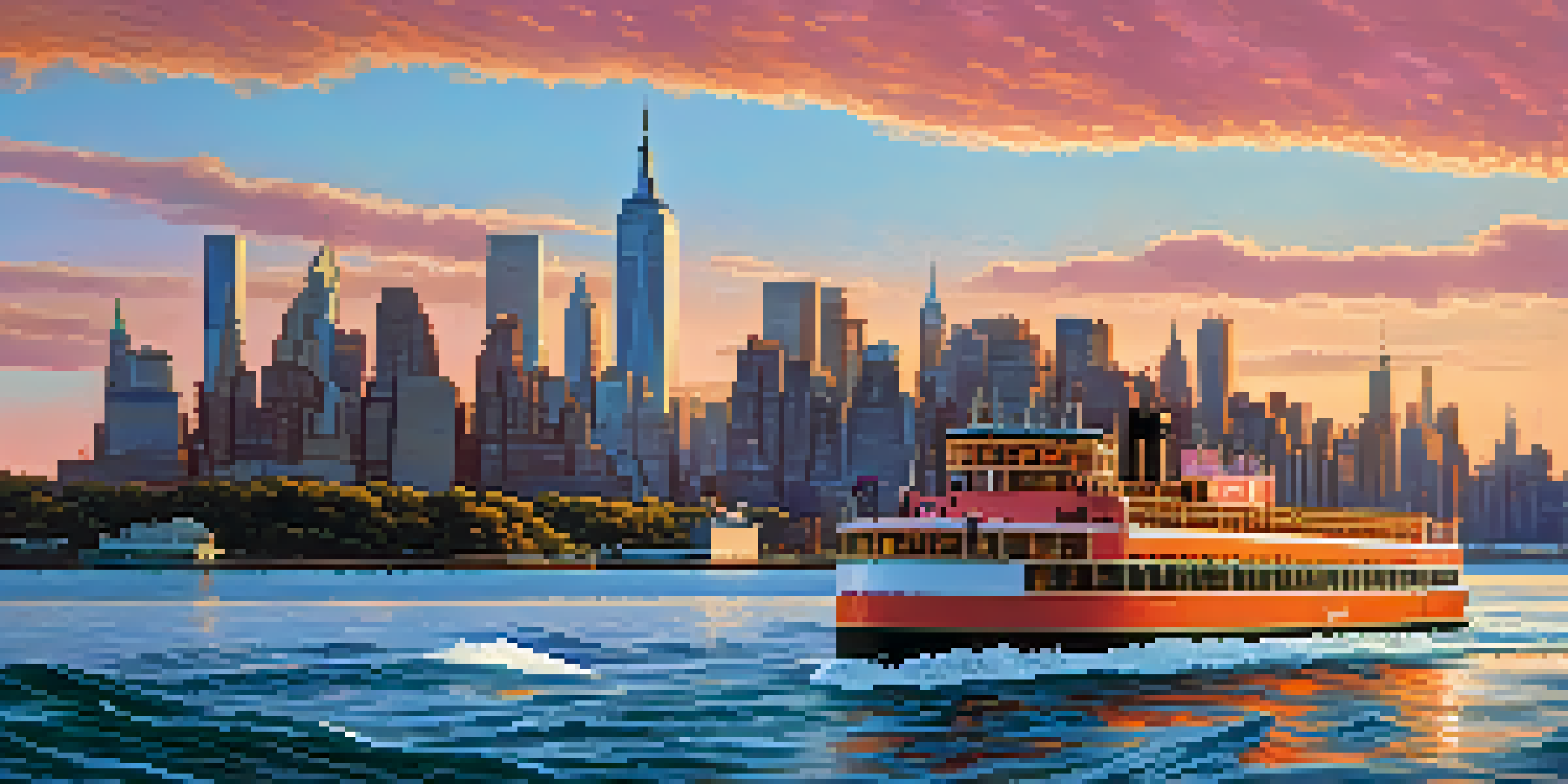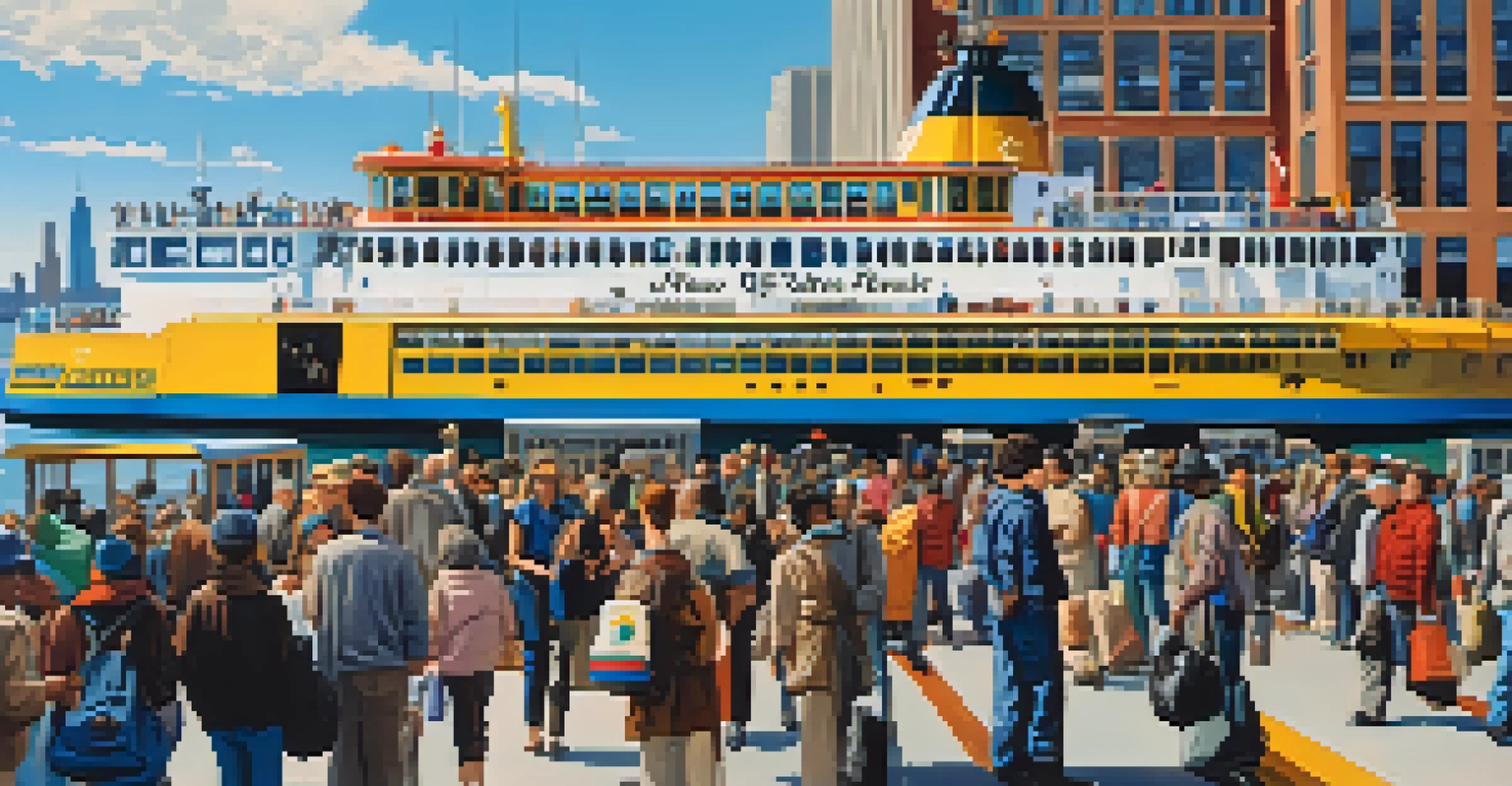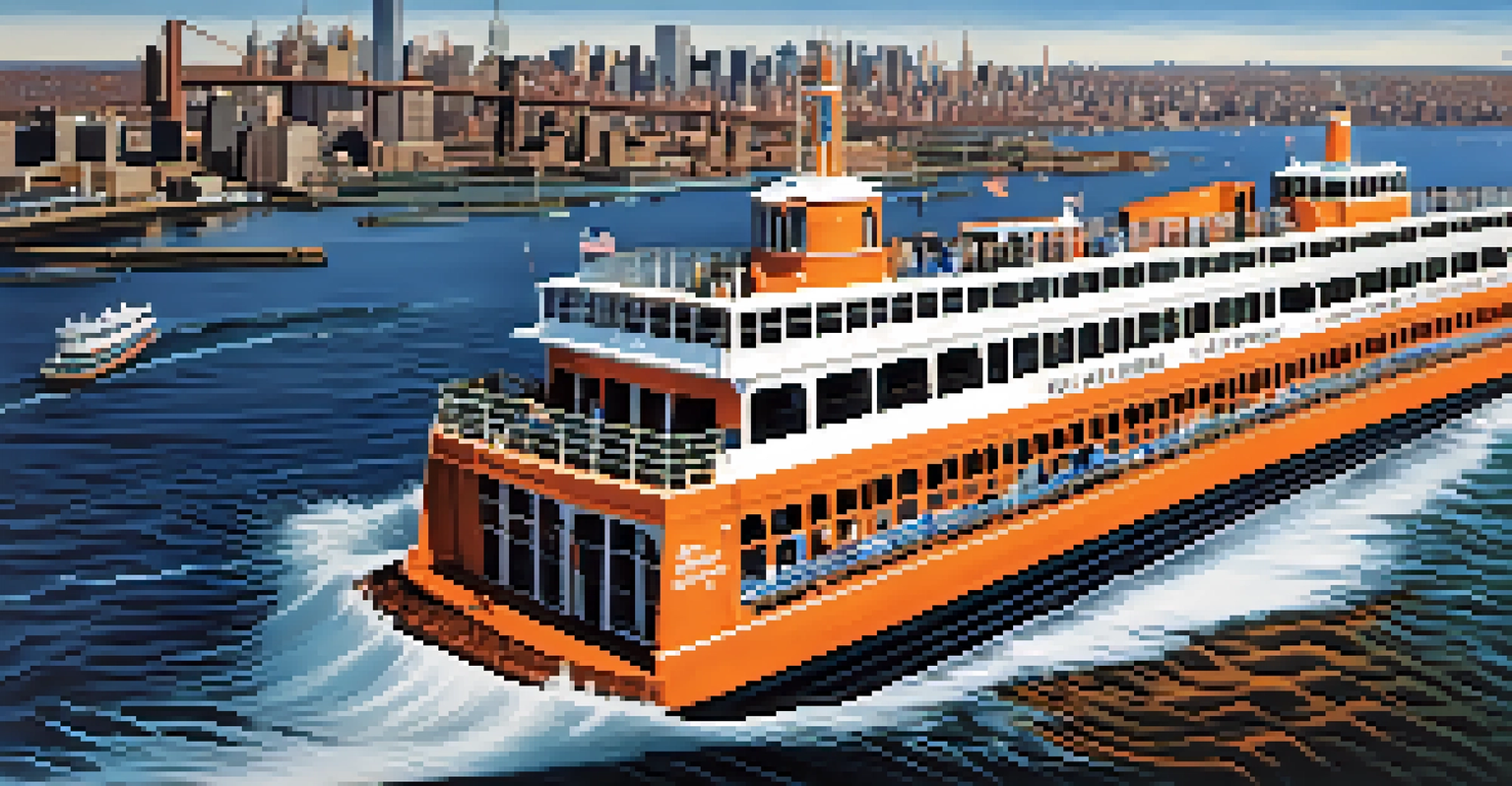The Role of Ferries in New York State's Transportation Mix

Introduction: The Importance of Ferries in New York
Ferries play a crucial role in New York State's transportation landscape, connecting various regions across the waterways. They serve as an essential link for commuters, tourists, and freight, offering a unique mode of travel that is both efficient and scenic. With the hustle and bustle of urban life, ferries provide a refreshing alternative that is often overlooked.
Ferries are essential to the fabric of New York's transportation system, providing a unique and scenic alternative to traditional transit options.
Beyond just transportation, ferries enhance the travel experience by providing stunning views of iconic landmarks like the Statue of Liberty and the Manhattan skyline. This makes ferry rides not just a means to get from point A to point B, but a memorable part of the journey itself. In essence, they blend practicality with pleasure.
As we delve into the specifics, we'll uncover how ferries complement other modes of transport in New York, their economic impact, and their role in sustainability. This exploration reveals that ferries are more than just boats; they are vital arteries in the state's transportation network.
Ferries as a Commuter Solution in New York City
In New York City, ferries serve as a lifeline for many commuters who seek alternatives to crowded subways and buses. The NYC Ferry service has expanded rapidly, offering routes that connect neighborhoods that were previously underserved. This expansion has provided residents with a reliable option to reach work and leisure destinations efficiently.

For example, the East River Ferry connects areas like Long Island City and DUMBO, making it easier for workers to traverse the city without the stress of traffic. This not only saves time but also enhances the overall commuter experience by providing a relaxing ride across the water. With comfortable seating and onboard amenities, ferries are becoming a favorite among daily travelers.
Ferries Enhance Commuter Experience
Ferries provide a reliable and scenic alternative for NYC commuters, connecting underserved neighborhoods and reducing congestion.
Moreover, the convenience of ferry schedules, which are often synchronized with other transit services, has made them an attractive choice for many. As New York continues to grow, the importance of ferries in reducing congestion and providing seamless connections will only increase.
Tourism: Ferries as a Gateway to New York's Attractions
Ferries are not just for locals; they also play a significant role in tourism, offering visitors a unique way to experience New York's iconic sights. The Staten Island Ferry, for instance, is a popular attraction in itself, providing free rides that offer panoramic views of the harbor and city skyline. Tourists flock to this ferry not just for transportation but for the breathtaking photo opportunities it presents.
Sustainable transport solutions like ferries are key to reducing congestion and enhancing the quality of urban life.
In addition to the Staten Island Ferry, other routes connect tourists to destinations like Governors Island and Ellis Island, making it easy to explore these historic sites. This ease of access supports local businesses and promotes tourism-related activities, from dining to recreational events. Essentially, ferries enhance the overall visitor experience by adding a layer of adventure to their travels.
Furthermore, the scenic nature of ferry rides encourages more people to choose this mode of transport, contributing to a vibrant tourism economy. As visitors seek out new experiences, ferries will continue to play a pivotal role in showcasing the beauty of New York State’s waterways.
Ferries and the Environment: A Sustainable Choice
In an era where sustainability is increasingly important, ferries offer a greener alternative to traditional forms of transport. By reducing reliance on cars and minimizing road congestion, they contribute to lower emissions and a cleaner environment. Many ferry services are now investing in eco-friendly vessels that utilize cleaner fuels or electric power, showcasing their commitment to sustainability.
Additionally, ferries help protect urban air quality by offering a congestion-free route for commuters and tourists alike. This not only benefits the environment but also enhances the quality of life for residents in densely populated areas. The shift towards greener ferry options reflects a broader trend in New York's transportation strategy, which prioritizes ecological responsibility.
Ferries Boost Tourism and Local Economy
Ferries facilitate access to iconic attractions, supporting local businesses and enhancing the overall visitor experience.
As the state continues to invest in sustainable infrastructure, the role of ferries will only grow. They represent a bridge to a more sustainable future for New York’s transportation system, aligning with the goals of reducing carbon footprints and promoting environmental stewardship.
Economic Impact of Ferries on Local Communities
Ferries significantly contribute to local economies by providing essential transportation services that facilitate commerce and tourism. The accessibility offered by ferries can lead to increased foot traffic in local businesses, from restaurants to shops, thereby boosting sales and creating jobs. This economic ripple effect underscores the importance of ferries beyond just transportation.
For instance, areas that are serviced by ferries often see a rise in property values and new developments, as the convenience attracts residents and investors alike. Additionally, the ferry industry itself creates numerous employment opportunities, ranging from crew members to maintenance staff, further enriching local economies. This symbiotic relationship highlights how transportation infrastructure can foster economic growth.
As New York continues to evolve, the economic benefits of ferry services will be a critical aspect of community development. Investing in and expanding ferry services can lead to thriving neighborhoods that are interconnected and vibrant.
Challenges Facing the Ferry System in New York
While ferries are a vital part of New York's transportation mix, they are not without challenges. Weather conditions can significantly impact ferry schedules, causing delays that affect commuters and tourists alike. Additionally, maintaining and upgrading ferry infrastructure requires substantial investment, which can be a hurdle for operators and government agencies.
Another challenge is competition with other modes of transportation, such as buses and subways, which may offer more direct routes or faster service during peak hours. To remain a viable option, ferry services must continually adapt to meet the evolving needs of their users. This includes enhancing reliability and integrating with other transit systems for a seamless travel experience.
Sustainable Transport Option for NYC
Ferries contribute to environmental sustainability by reducing emissions and offering eco-friendly travel alternatives.
Moreover, public awareness and perception of ferry services can also pose challenges. Many potential users may not be familiar with the routes and schedules, which can inhibit ridership. Addressing these challenges is essential for ensuring that ferries can continue to thrive as a transportation option in New York.
The Future of Ferries in New York State
Looking ahead, the future of ferries in New York State appears promising, with a growing recognition of their value in the transportation network. There are ongoing discussions about expanding routes and introducing new services to meet the demands of a changing population. Innovations in ferry technology, such as electric vessels and improved scheduling systems, are also on the horizon.
Additionally, as urban areas continue to prioritize sustainable transportation solutions, ferries are well-positioned to play a pivotal role in achieving these goals. Enhancing ferry services can help alleviate congestion and reduce environmental impacts, aligning with the state's broader transportation objectives. This focus on sustainability will likely attract more riders, further cementing ferries as a transportation mainstay.

Ultimately, the development of ferry services will require collaboration among stakeholders, including government agencies, local businesses, and ferry operators. By working together, they can ensure that ferries remain an integral part of New York's transportation mix, continuing to provide essential services for years to come.